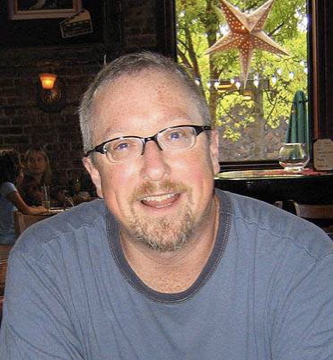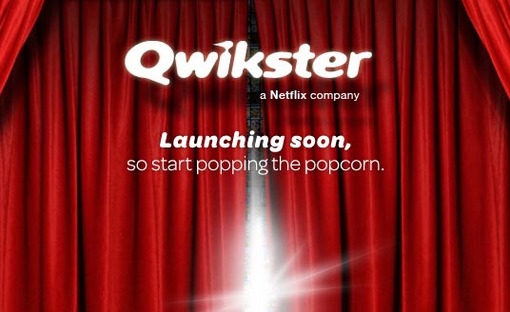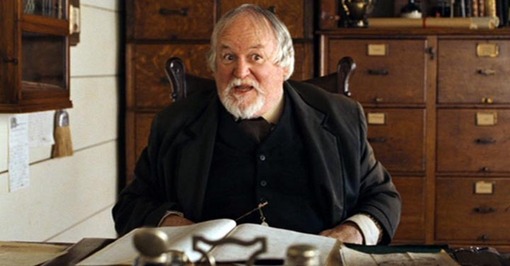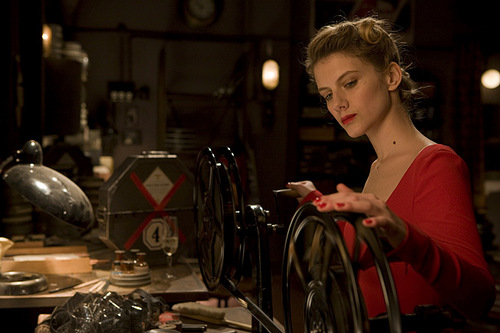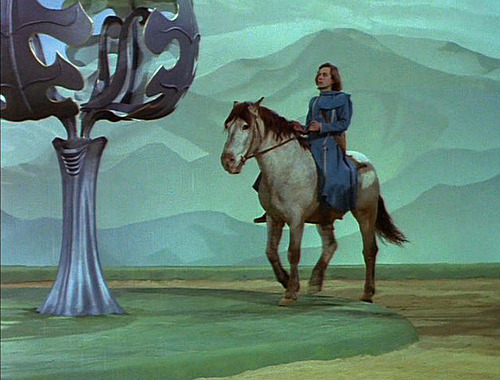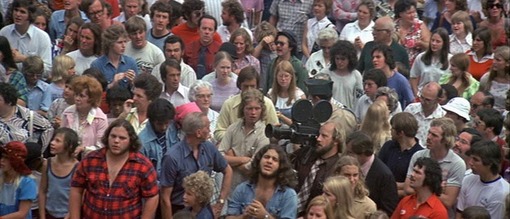How does it feel? Footnote fetishism & “I’m Not There”
View image Franklin, Blanchett, Whishaw, Bale, Ledger, Gere: None of these characters is named “Bob” or “Dylan.”
Nobody’s life and work has been analyzed, interpreted, scrutinized for possible meanings and clues, quite like Bob Dylan’s. One key tale in Dylan’s history/mythology (though it’s reportedly true) is that of the hustler/stalker character known as The Scavenger, who regularly sifted through Dylan’s garbage looking for skeleton keys to What He Means, and eventually started interpreting himself into Dylan’s songs. Todd Haynes’ movie, “I’m Not There” (which played the New York Film Festival this week after premiering in Toronto, and opens wider in November) doesn’t intend to be any kind of Rosetta Stone for deciphering Dylan or his music. If anything, it applies further layers of imagery to the legend — deconstructing, reinterpreting and elaborating upon it at the same time.
So, what do you really need to know about Dylan in order to appreciate Haynes’ thrilling head-trip of a movie? As little as possible, probably — or as much as possible, or somewhere in-between. I’m no Dylanologist, but I loved it at first sight and, weeks later, I’m still loving remembering and thinking about it. True, I have all but four or five of Dylan’s albums from “Bob Dylan” (1962) to “Oh Mercy” (1989), and most of them again from “Time Out of Mind” (1997) through the Bootleg Series reissues and up to last year’s “Modern Times.” I worshipped “Blood on the Tracks” in college (still do), but I’ve never been as obsessive about him as many of his devotees (acolytes? disciples?).
View image Jim James of My Morning Jacket as a Rolling Thunder Revue-esque troubadour on Desolation Row in an old western town called Riddle in “I’m Not There.”
No particular Dylan knowledge is required here, yet I think “I’m Not There” encourages annotation, elaboration, imagination — not unlike like “Zodiac,” another of the year’s most fascinating movie. (See my random notes on that one here.) Still, it’s the experience of the movie itself that matters most, and that is most enjoyable. As Robert Sullivan writes in a fascinating but sometimes misguided, poorly edited and factually questionable New York Times Magazine story (“This Is (Not) A Bob Dylan Movie”):
“Haynes didn’t want to make a movie that was about anything. He wanted to make a movie that is something.”
That’s the best two-sentence description of “I’m Not There” I can imagine. But let me counter the article’s impression (or, at least, the sub-heads’) that this is a “weird” movie: “It Has to Be the Weirdest Movie of the Year.” No, it doesn’t. And it’s not. It isn’t even as odd or unfamiliar-feeling as Haynes’ “Poison” or “Safe” or “Velvet Goldmine,” and it doesn’t mean to be — although it’s obviously less linear than “Far From Heaven,” I’ll give you that. Yes, it casts six actors as different versions of the same central figure. But lots of movies (even “Ray” and “Walk the Line”) have done those kinds of things to show characters at various stages in their development. The only difference is that “I’m Not There” isn’t strictly chronological. It plays with phases in Dylan’s life, and public or private personae of his, but doesn’t cast them according to age, gender or race. What’s so terribly weird about that? (It’s certainly less unsettling than Luis Buñuel’s deliberately arbitrary and unpredictable casting of two actresses as one woman in “That Obscure Object of Desire.”)
I’ve been listening to Dylan a lot since I saw the movie, re-watching D.A. Pennebaker’s “Dont Look Back” and Martin Scorsese’s “No Direction Home: Bob Dylan,” reading liner notes and wading through the mixed-up confusion of Robert Shelton’s repetitive, contradictory, over-written and under-organized semi-authorized 1986 biography, “No Direction Home: The Life and Music of Bob Dylan.” I feel like watching Sam Peckinpah’s “Pat Garrett and Billy the Kid” (which is woven prominently into “I’m Not There”), one of my most-loved movies, but it always takes a heavy emotional toll on me, so I don’t know if I’m up to it right now.
Meanwhile, here are a few more things I’d like to scribble in the margins of Haynes’ movie for now, thoughts to tickle your fancy and to resonate in your mind while you’re watching “I’m Not There” (which I fervently hope you will).
Think of it as kind of Viewer’s Companion to the film:
At the most basic level, [Haynes] has tried to make a film with the power to carry you away, the power of a song, and what he is asking of the audience is to relinquish control, which is, of course, a huge gamble. “You have to give up a certain amount of control when you listen to music,” Haynes told me.
— Sullivan, NYT Magazine (October 7, 2007)
“The particular magic that Dylan has over, say, twenty million people, is the paradox and the inaccessibility of him. In his music, people are struck by something and yet they don’t really seem to know what it is. That’s always been the case with the most acute and exalted poetry. There are lines of Shakespeare like this, in which you don’t have to know who plays what to be struck by the magic of words. Then the insight of the listener is followed by intense perplexity. We hear something that we finally realize is saying something we think ourselves and then we want to know more about the writer who can tell us something about ourselves.”
— Richard Fariña, quoted from an interview with Shelton in his book “No Direction Home” (1986; republished 1997, 2003; p. 327)
“The amazing thing about Todd Haynes’s ceaselessly amazing ‘I’m Not There’ is how little nostalgia has to do with it. Just as Haynes used an obsolete style of melodrama to stir contemporary hearts with ‘Far From Heaven,’ he now deploys the life and legend of Bob Dylan to mediate a huge complex of ideas and feelings about the soul of the artist (or any feeling person) right now. Biography is only the vehicle; hagiography is the last thing on his mind. Haynes says more about the impact of Iraq on his psyche by reflecting it through Vietnam…”
— Nathan Lee, The Village Voice (September 25, 2007)
“I don’t know that it does make sense,” Cate Blanchett says of the film, “and I don’t know whether Dylan’s music makes sense. It hits you in kind of some other place. It might make sense when you’re half-awake, half-asleep, in the everyday lives in which we live. I don’t think the film even strives to make sense, in a way.”
— Sullivan, NYT Magazine, Op. cit.
View image Highway 8 1/2 Revisited.
“The minute you try to grab hold of Dylan, he’s no longer where he was. He’s like a flame: If you try to hold him in your hand you’ll surely get burned. Dylan’s life of change and constant disappearances and constant transformations makes you yearn to hold him, and to nail him down. And that’s why his fan base is so obsessive, so desirous of finding the truth and the absolutes and the answers to him — things that Dylan will never provide and will only frustrate…. Dylan is difficult and mysterious and evasive and frustrating, and it only makes you identify with him all the more as he skirts identity.”
— Haynes, in preliminary Weinstein Company press notes for “I’m Not There”
“If a film were to exist in which the breadth and flux of a creative life could be experienced, a film that could open up as oppose to consolidating what we think we already know walking in, it could never be within the tidy arc of a master narrative. The structure of such a film would have to be a fractured one, with numerous openings and a multitude of voices, with its prime strategy being one of refraction, not condensation. Imagine a film splintered between seven separate faces — old men, young men, women, children — each standing in for spaces in a single life.”
— Haynes’ “I’m Not There” pitch to Dylan and his management, quoted in Sullivan, NYT Magazine, Op. cit.
Do I contradict myself?
Very well then I contradict myself,
(I am large, I contain multitudes.)
— Walt Whitman, “Song of Myself” (from “Leaves of Grass,” 1855)
